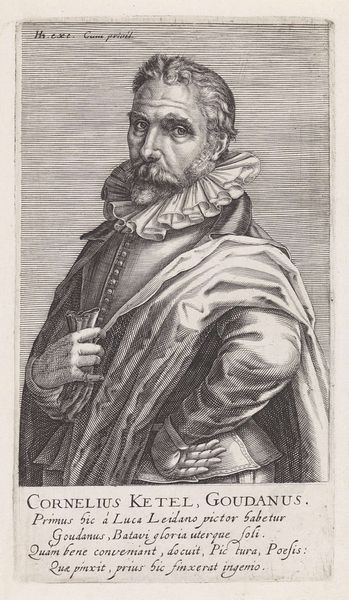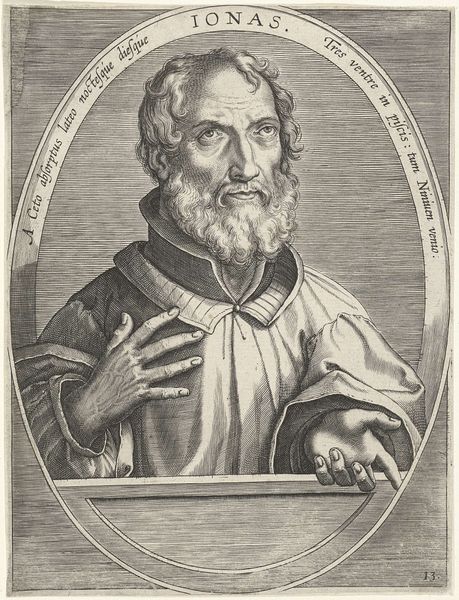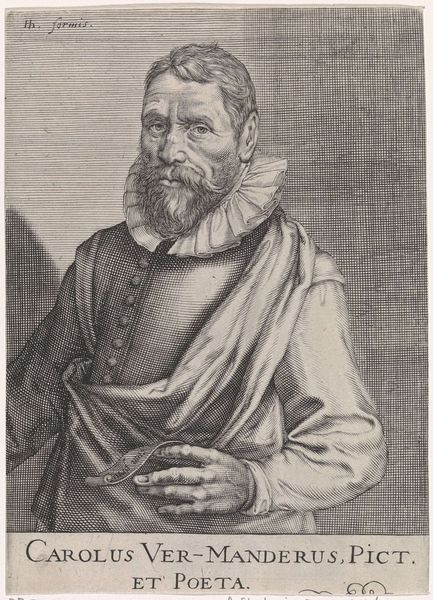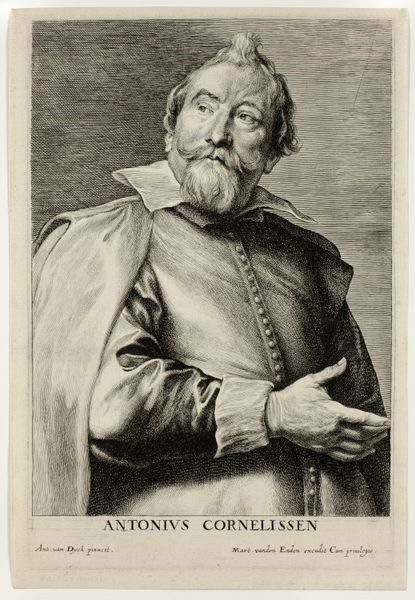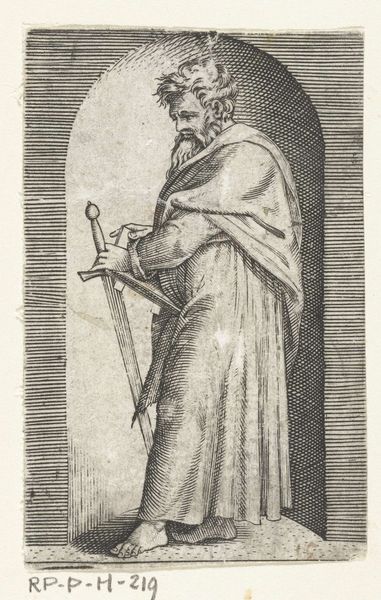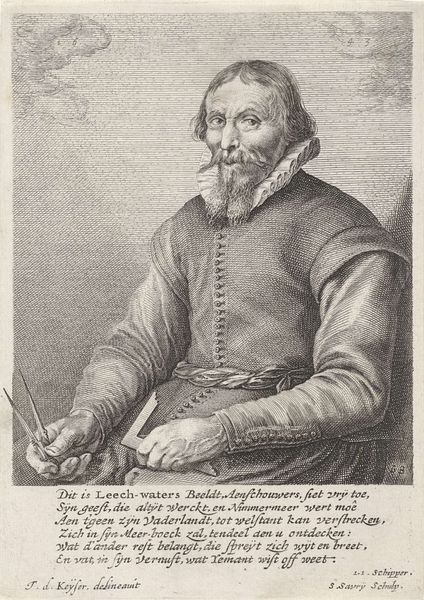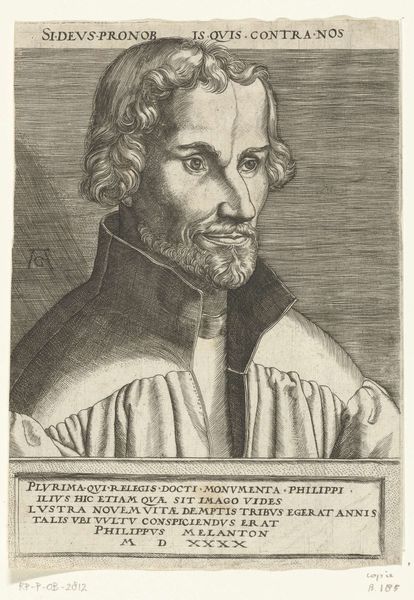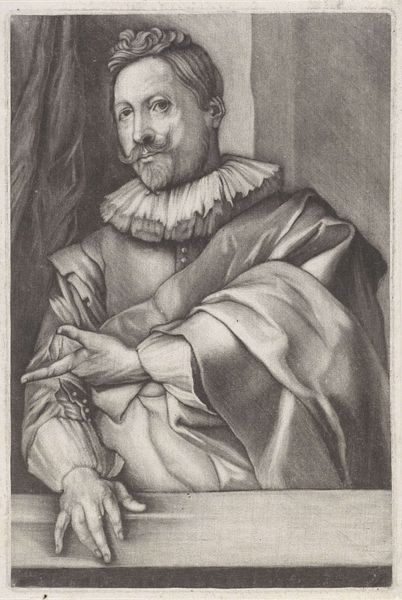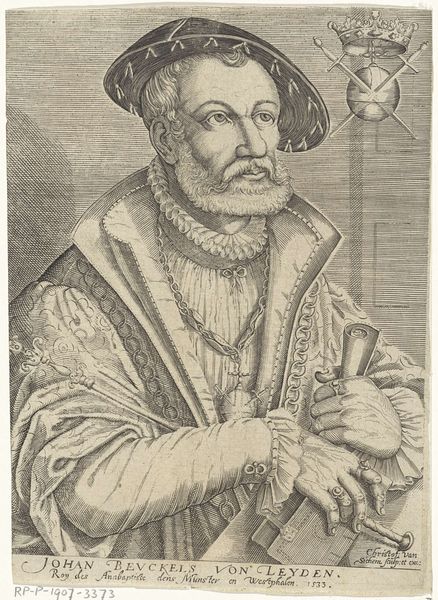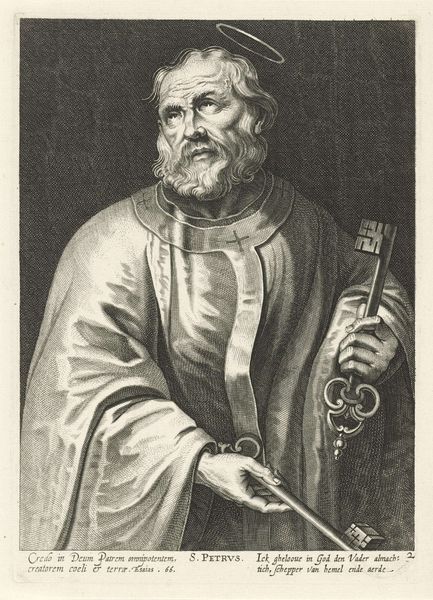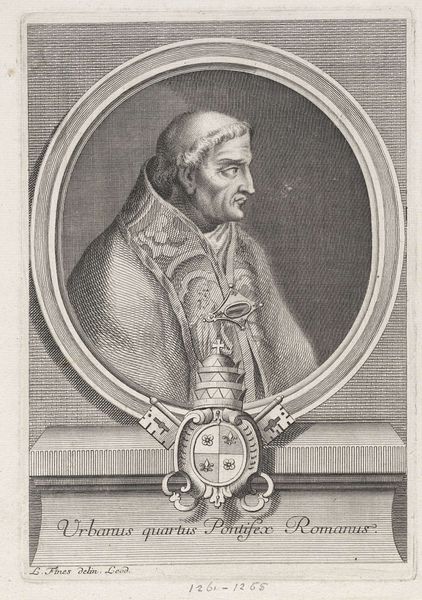
print, engraving
#
portrait
#
baroque
#
portrait image
#
dutch-golden-age
# print
#
figuration
#
engraving
#
fine art portrait
#
realism
Dimensions: height 251 mm, width 159 mm
Copyright: Rijks Museum: Open Domain
Editor: This is "Portret van Cornelis de Vos," a print from around 1645-1646 by Lucas Vorsterman I. It’s a very formal portrait, but the way he’s holding his hands seems… odd. What can you tell me about it? Curator: Indeed, that gesture invites inquiry. Consider, firstly, that "pictor iconvm antverpiae" below his name translates to "painter of images of Antwerp." The portrait itself *becomes* an icon. What does his gaze tell you? Editor: He looks like he's appraising me. Sort of assessing. Curator: Precisely. Now, consider the tradition of portraiture in the Dutch Golden Age. Portraits were not just likenesses, but statements of status, profession, and moral character. What elements here do you think convey such information? Editor: His clothes, for one thing. And the precise detail in the engraving gives him a lifelike quality, like we can really see him as he was. Curator: Exactly. The clothing speaks to his social standing, and the skilled rendering alludes to his artistic abilities. But look again at his hands. He's offering something, isn’t he? Consider it metaphorically: an offering of his craft, his vision. It's also interesting to see how Vorsterman translated what was initially a painting by van Dyck into a black-and-white print. A doubling of sorts. What did you notice in the differences of both depictions? Editor: It makes the contrast stronger. Very pronounced, while preserving the detail from van Dyck's painting. The engraving lends it a sense of graphic authority. I never thought about portraits as "icons" before. Curator: The power of visual symbols. Each element carefully placed to convey meaning. An icon for the ages.
Comments
No comments
Be the first to comment and join the conversation on the ultimate creative platform.

